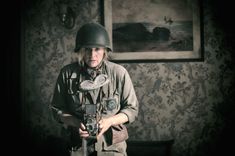Lee
Synopsis
Lee begins in the late 1930s, as Hitler amasses power in Germany. Miller (Winslet) leaves her world and her artistic circle of friends behind in France, and travels to London, having fallen wildly in love with the art dealer Roland Penrose (Alexander Skarsgård). The two embark on a passionate relationship, then war breaks out in Europe. Already a renowned photographer, Miller gains a job completing assignments for British Vogue, but is shocked by the restrictions placed on female photographers. As Hitler’s regime takes over Europe, Miller grows increasingly frustrated that her work is constrained by patriarchal rules, leaving her documenting the British home front. Determined to be where the action is she defiantly pushes against the establishment and with the blessing of her friend and editor Audrey Withers (Andrea Riseborough), Miller overcomes enormous obstacles and gets herself to the frontline of World War II. Immediately compelled to document the truth she turns her lens in the direction of suffering, and slowly begins to reveal the horrific loss of life due to Hitler’s diabolical crimes against the innocent victims of his regime. Lee Miller carried out this dangerous work for the sake of the female readers of Vogue Magazine, from whom the reality of war was largely kept hidden.
After battling her way through the siege of Saint-Malo and photographing one of the first uses of Napalm, Miller joins forces with Life Magazine photographer David E. Scherman (Andy Samberg). She and Scherman’s friendship and partnership yield an indelible series of pictures sent back to the U.S. and England, which to this day continue to shape how we view these events. Lee Miller had a level of tenacity and fearlessness that resulted in the duo being able to situate themselves right at the heart of
the conflict. Never shying away from using her feminine wit when faced with the military bureaucracy that often threatened their efforts.
The film follows their push behind enemy lines as the Nazi empire crumbled. Bribing their way into Hitler's Munich apartment — where together they choreographed the famed photo of Miller in Hitler’s bathtub on the same day that Hitler took his own life — the day after Dachau Concentration camp was liberated. They were among the first photographers to enter the camps on the day of the liberation, where Miller developed a series of urgent images that remain some of the most definitive evidence of Hitler’s most shocking crimes against humanity.
Miller had a profound understanding and empathy for women and the voiceless victims of war. Her images display both the fragility and ferocity of the human experience. Above all, the film shows how Miller lived her life at full-throttle in pursuit of truth, for which she paid a huge personal price, forcing her to confront a traumatic and deeply buried secret from her childhood.
